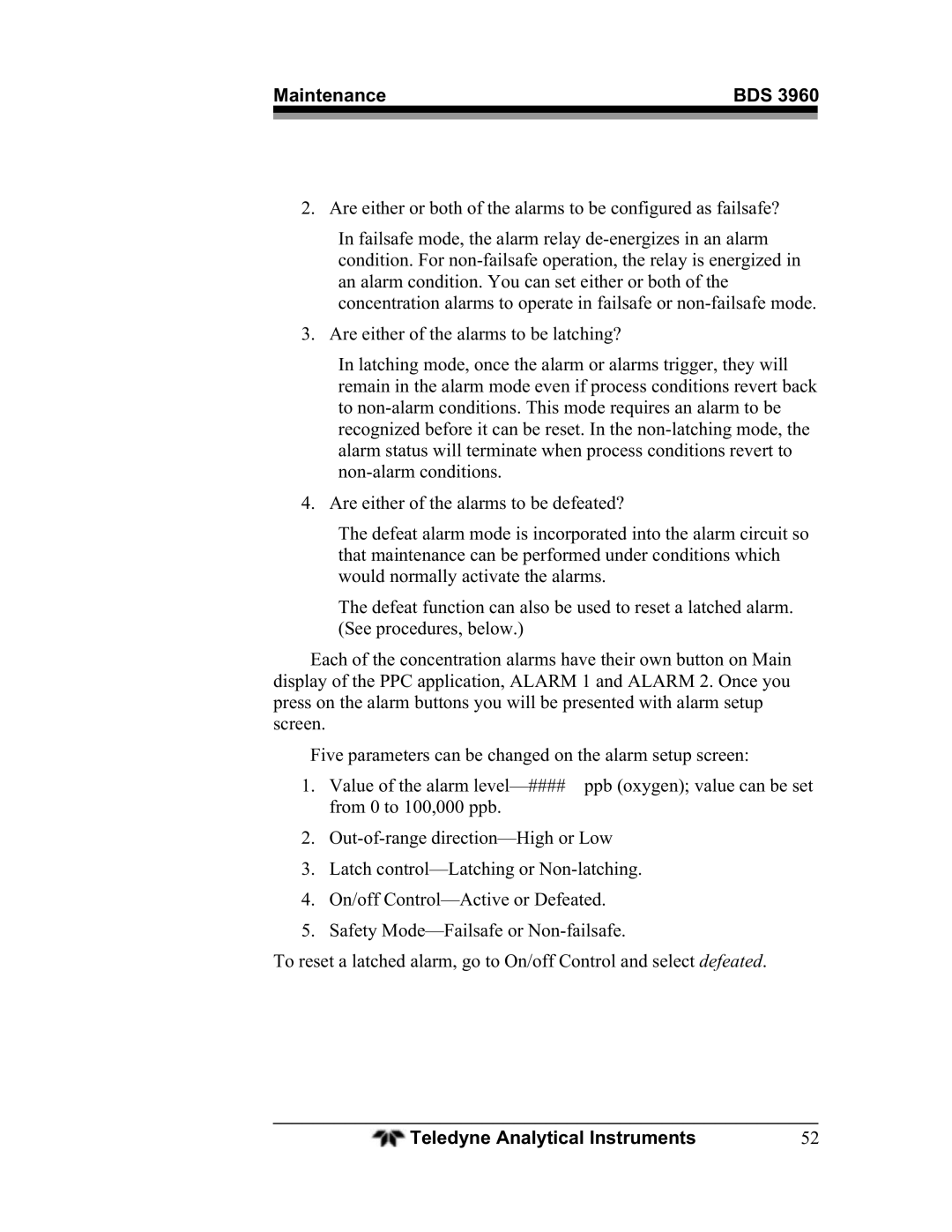Maintenance | BDS 3960 | |
|
|
|
|
|
|
2. Are either or both of the alarms to be configured as failsafe?
In failsafe mode, the alarm relay
3. Are either of the alarms to be latching?
In latching mode, once the alarm or alarms trigger, they will remain in the alarm mode even if process conditions revert back to
4. Are either of the alarms to be defeated?
The defeat alarm mode is incorporated into the alarm circuit so that maintenance can be performed under conditions which would normally activate the alarms.
The defeat function can also be used to reset a latched alarm. (See procedures, below.)
Each of the concentration alarms have their own button on Main display of the PPC application, ALARM 1 and ALARM 2. Once you press on the alarm buttons you will be presented with alarm setup screen.
Five parameters can be changed on the alarm setup screen:
1. Value of the alarm
2.
3.Latch
4.On/off
5.Safety
To reset a latched alarm, go to On/off Control and select defeated.
Teledyne Analytical Instruments | 52 |
